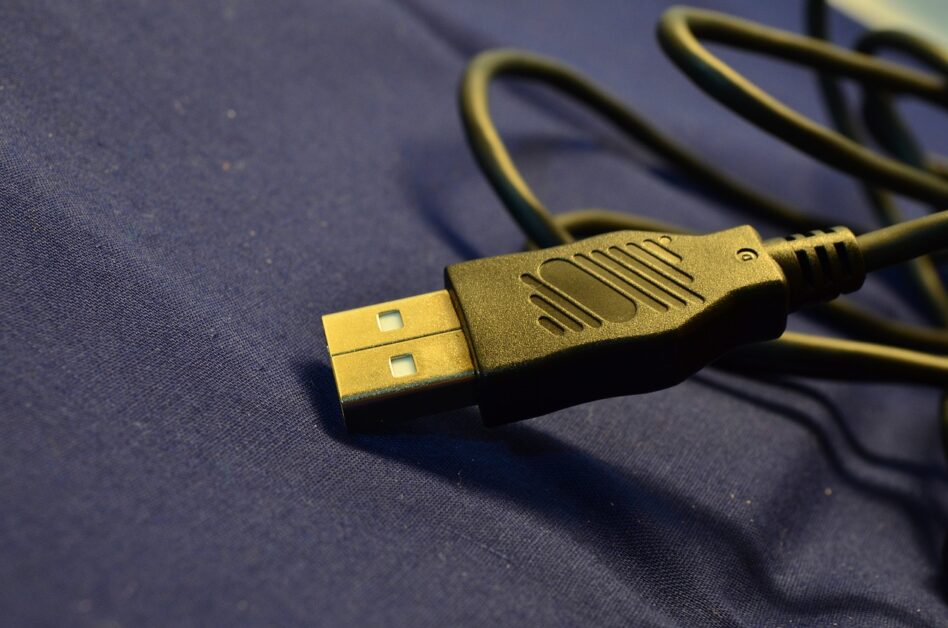
How to Differentiate Between a USB Charge-Only Cable and a USB Data Cable
Have you ever had trouble transferring files from your PC to your smartphone using a USB cable? Sometimes, your computer may not recognize your device and only charge it instead. This could be due to a few reasons, such as using a fake cable or a faulty one. However, in most cases, the cable itself is not the issue but rather not suitable for data transfer. In today’s world, where technology is an essential part of our daily lives, having the right cables for our devices is crucial. When it comes to USB cables, it’s essential to differentiate between a charge-only cable and a data cable. Although both cables may appear similar, they serve different purposes. In this guide, we will explore the key differences between USB charge-only cables and USB data cables, how to identify them, and why it matters.
Understanding USB Cables

USB (Universal Serial Bus) cables have become an essential part of our daily digital life. They allow us to connect our devices, such as smartphones, tablets, cameras, and computers, for multiple purposes, including charging, data transfer, and other functionalities. However, not all USB cables serve the same purpose. While some cables are designed exclusively for charging, others can transfer data as well. It is essential to differentiate between charge-only cables and data cables to ensure the proper functioning of our devices and avoid any inconvenience or frustration.
Types of USB cables
USB cables come in different shapes, sizes, and configurations to accommodate the diverse needs of users. It’s important to understand the two main types of USB cables: charge-only cables and data cables.
- USB Charge-Only Cables: USB charge-only cables, as the name suggests, are designed exclusively for charging devices. These cables have a simplified wiring system that consists of two wires: positive (+) and negative (-). The positive and negative wires supply electric power to the device being charged, allowing it to recharge its battery. Charge-only cables do not have the necessary wiring for data transfer.
- USB Data Cables: On the other hand, USB data cables are capable of both charging and data transfer. These cables contain an additional pair of wires, known as the data transfer (D+) and data receive (D-) wires. These wires enable the exchange of data between devices, allowing for tasks such as file transfer, device synchronization, and firmware updates. Data cables provide a more comprehensive connection between devices, offering greater functionality compared to charge-only cables.
Wiring System of USB Cables: How (and why) are these cables different?

To further understand the difference between charge-only cables and data cables, let’s take a closer look at their wiring systems.
- Charge-Only Cable Wiring: Charge-only cables have a simple wiring system consisting of the positive (+) and negative (-) wires. These wires are responsible for delivering electric power from the power source (e.g., wall adapter, computer) to the device being charged. The absence of data transfer wires limits the functionality of charge-only cables to charging only.
- Data Cable Wiring: Data cables, on the other hand, have a more complex wiring system that includes the positive (+), negative (-), data transfer (D+), and data receive (D-) wires. The positive and negative wires serve the same purpose as in charge-only cables, supplying power to the device. The data transfer and data receive wires, however, enable bidirectional data exchange between devices, facilitating functions beyond charging.
How to tell the difference between a Data cable and a charge-only cable

There is currently no rule enforced by the USB Implementers Forum that requires USB manufacturers to label or distinguish charge-only cables from those that support data transfer. As a result, it can be challenging to differentiate between the two. However, there are some reliable ways to determine if a USB cable is only capable of charging or if it supports data transfer.
1. Physical Examination
While it may not always be possible to determine the type of USB cable solely based on its physical appearance, there are a few visual cues that can help differentiate between charge-only cables and data cables.
One factor to consider is the thickness of the cable. Data cables typically have four wires, which means they have a thicker outer insulation compared to charge-only cables that have only two wires. This is because data cables require extra wires for data transfer. However, this is not always a foolproof method, as cable manufacturers may vary in their design choices.
Another visual indicator is the labelling or branding on the cable itself. Some manufacturers explicitly indicate whether a cable is a charge-only cable or a data cable. However, not all cables have such labelling, so it’s important to verify the functionality of the cable through other means.
2. Contacting Customer Support
When in doubt about the functionality of a USB cable, contacting the manufacturer’s customer support can provide clarification. Whether purchasing online or from a physical store, reaching out to customer support and providing them with the necessary information can help determine if a cable is a charge-only cable or a data cable.
3. Preliminary Testing
If you already have a USB cable and are unsure of its capabilities, you can perform a preliminary test to check if it supports data transfer. Connect the cable between your device and a computer, then attempt to transfer a file or perform any data-related operation. If the computer recognizes the device and allows data transfer, it is likely a data cable. However, if the computer only charges the device without recognizing it for data transfer, the cable is likely a charge-only cable.
Using the right USB cable is crucial for optimal device functionality and performance. Using a charge-only cable for data transfer tasks can result in connection issues, failed transfers, and other frustrating experiences. Conversely, using a data cable for charging ensures that your device receives the necessary power and allows for data transfer when needed.
Misconceptions and Common Issues
There are several misconceptions and common issues surrounding USB cables. One common misconception is that all USB cables are capable of data transfer. As we have discussed, this is not the case, and it’s important to differentiate between charge-only cables and data cables.
Another common issue is the use of low-quality or counterfeit cables. These cables may not adhere to the proper wiring standards, leading to compatibility issues, slow charging, or even damage to devices. It’s recommended to purchase cables from reputable manufacturers or authorized retailers to ensure quality and reliability.
Tips for Choosing the Right USB Cable
To ensure you have the right USB cable for your needs, consider the following tips:
- Determine your requirements: Assess whether you need a cable for charging only or if data transfer is also necessary.
- Check device compatibility: Ensure that the cable is compatible with your device’s USB port and connector type (e.g., USB-A, USB-C, Micro-USB).
- Research reputable brands: Look for cables from trusted manufacturers known for their quality and reliability.
- Read product descriptions: Pay attention to product descriptions and specifications to verify if the cable supports data transfer.
- Check customer reviews: Read reviews from other customers to gain insights into the cable’s performance and durability.
Conclusion
In conclusion, understanding the difference between USB charge-only cables and USB data cables is essential for optimal device functionality and user experience. While charge-only cables are designed solely for charging purposes, data cables offer the additional capability of data transfer. By examining the wiring system, performing preliminary tests, and seeking clarification from customer support, users can ensure they are using the right cable for their specific needs. Choosing the right USB cable not only enhances device performance but also prevents compatibility issues and frustration.
